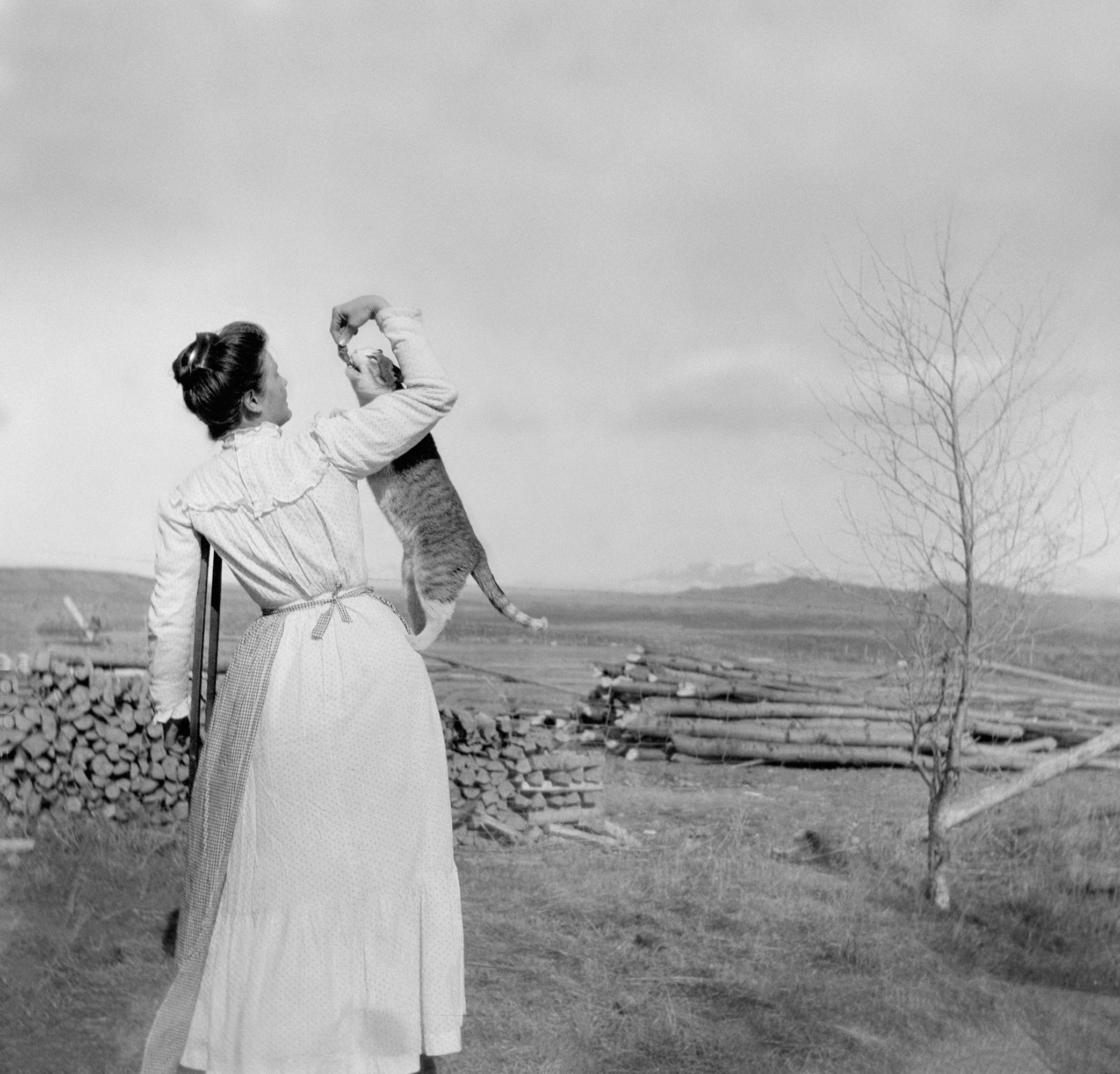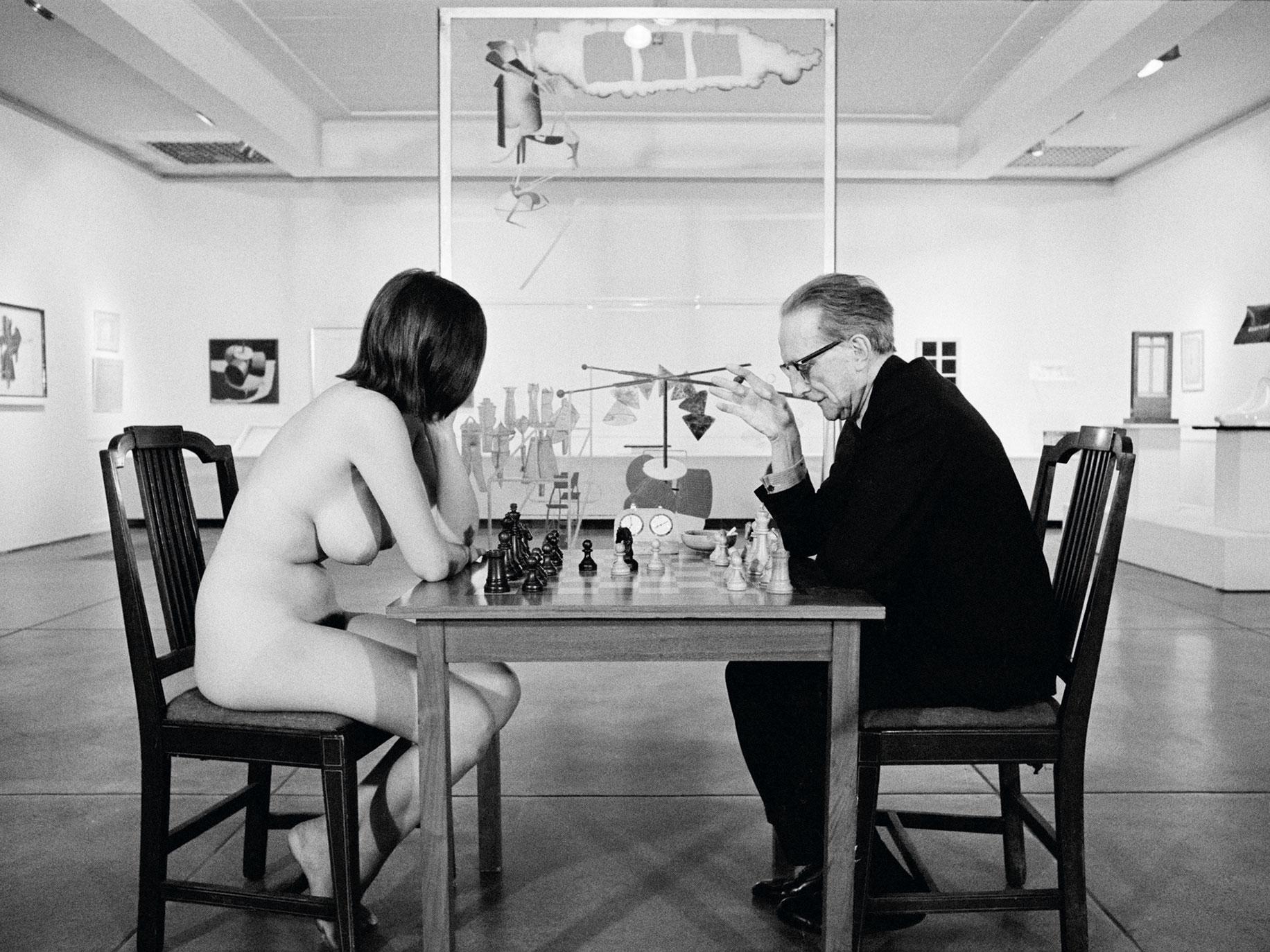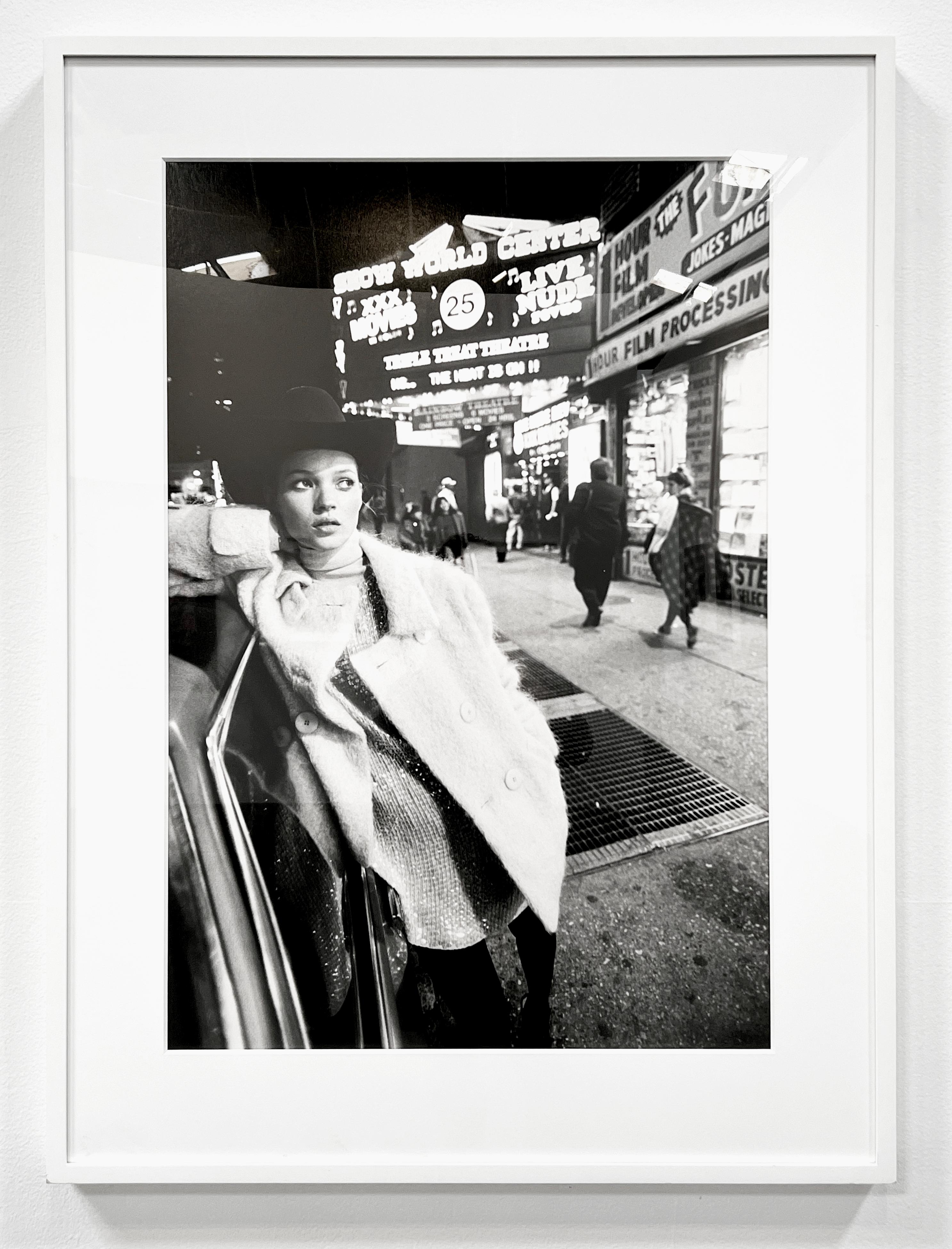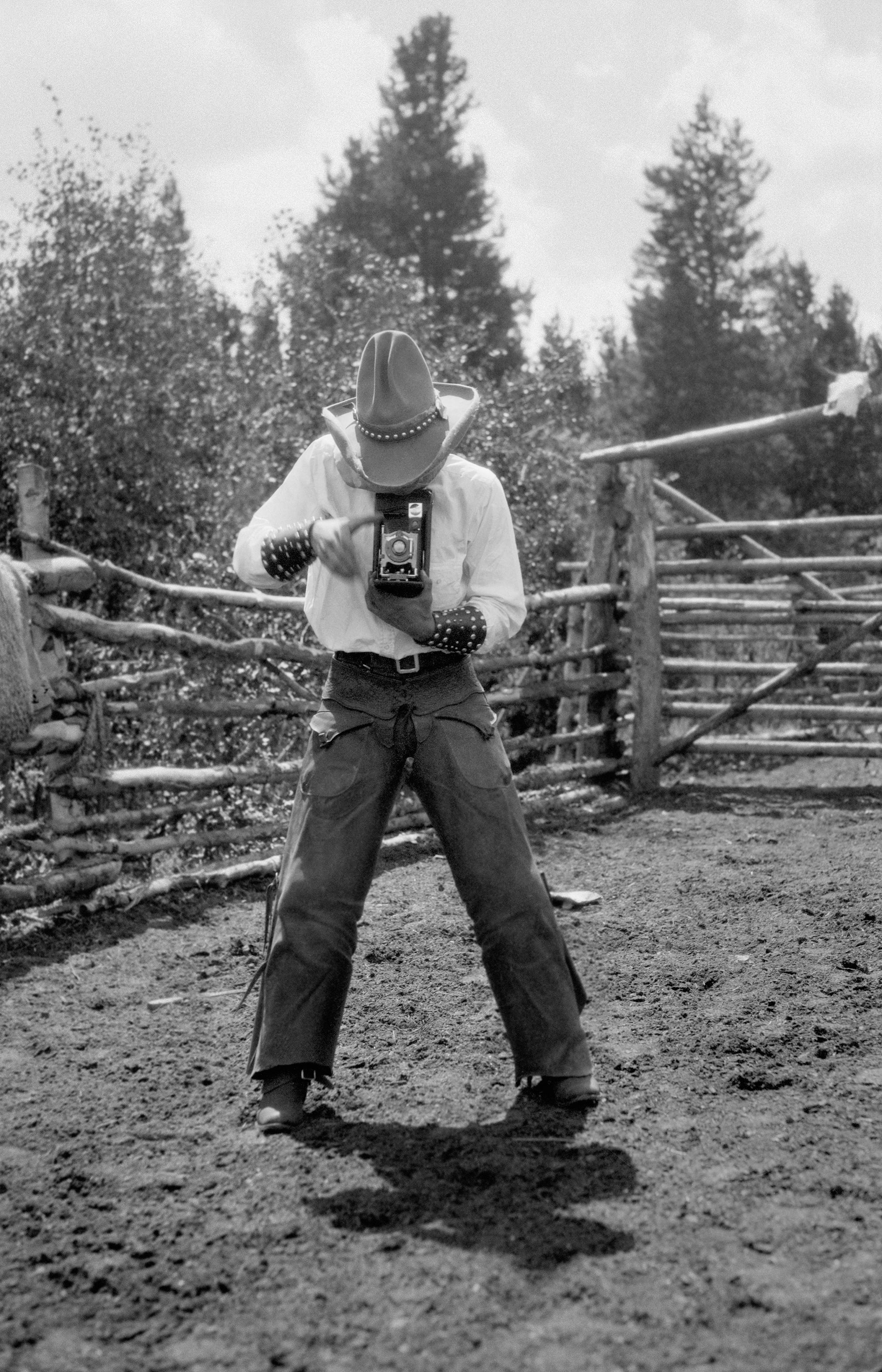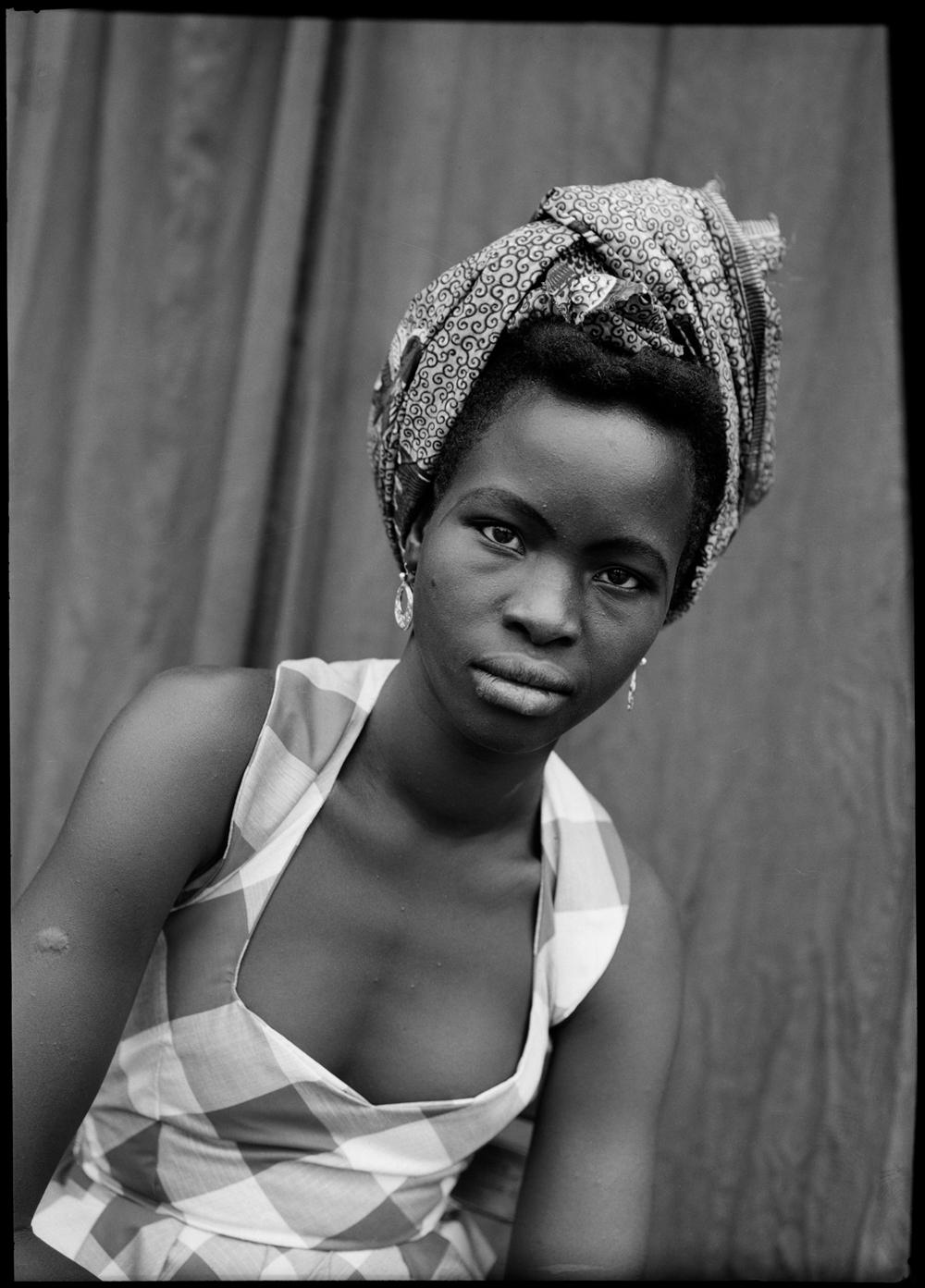Items Similar to "Barack Obama, Occidental College, No. 34" Lisa Jack, President Photography
Want more images or videos?
Request additional images or videos from the seller
1 of 7
Lisa Jack"Barack Obama, Occidental College, No. 34" Lisa Jack, President Photography1980
1980
About the Item
Lisa Jack
Barack Obama, Occidental College, No. 34, 1980
Signed, dated, and numbered on the reverse
Gelatin silver print
12 x 17 3/4 inches
Edition 4/75
Provenance:
M&B, Los Angeles
In 1980, when Obama was a freshman at Occidental College in Los Angeles , he was approached by an aspiring photographer named Lisa Jack, who asked him if he would be willing to pose for some black and white photographs that she could use in her portfolio. Of her first meeting (in a campus eatery) with Obama, Jack remembers only that “He was really cute. But what else does a 20-year-old girl remember." In the photos, Jack says, “You can see he is just posing, initially, but as the shoot goes on, he starts to come out. He was very charismatic even then." Jack never realized her dream of becoming a photographer and is now a psychologist.
Jack and Obama would see each other only a few more times while students. But in 2005, while on a tour, she spotted Obama on Capitol Hill and yelled hello. “He knew exactly who I was after all this time,” Jack says. “I was amazed."
On a dare from a skeptical friend, Jack decided to track down her negatives from the shoot. Initially, before she dug the film out from her basement, Jack never thought her pictures would have much life beyond her own darkroom. When she found them, the images of Obama “blew me away,” she says. “I had no idea I’d taken a whole roll of film."
For a while, Jack put the negatives in a safety-deposit box, so that they could not be used until after the election, w hen there would be no chance they could be used for a political purpose. Today, Jack says, she hopes the photos reveal a “spirit of fun and thoughtfulness. I’m not political” Jack says, “(But) these are historic photos and they should be shared."
- Creator:Lisa Jack (American)
- Creation Year:1980
- Dimensions:Height: 30.5 in (77.47 cm)Width: 22.5 in (57.15 cm)
- Medium:
- Period:
- Condition:
- Gallery Location:New York, NY
- Reference Number:1stDibs: LU1841213537512
About the Seller
5.0
Platinum Seller
These expertly vetted sellers are 1stDibs' most experienced sellers and are rated highest by our customers.
Established in 2021
1stDibs seller since 2022
59 sales on 1stDibs
Typical response time: 1 hour
- ShippingRetrieving quote...Ships From: New York, NY
- Return PolicyA return for this item may be initiated within 3 days of delivery.
More From This SellerView All
- "Barack Obama, Occidental College, No. 15" Lisa Jack, President PhotographyLocated in New York, NYLisa Jack Barack Obama, Occidental College, No. 15, 1980 Signed, dated, and numbered on the reverse Gelatin silver print Sight 21 1/2 x 14 1/2 inches Edition 7/50 Provenance: M&B, L...Category
1980s Black and White Photography
MaterialsSilver Gelatin
- "Barack Obama, Occidental College, No. 29" Lisa Jack, President PhotographyLocated in New York, NYLisa Jack Barack Obama, Occidental College No. 29, 1980 Signed, dated, and numbered on the reverse Gelatin silver print Sight 21 1/2 x 14 1/2 inches Edition 4/50 Provenance: M&B, Lo...Category
1980s Black and White Photography
MaterialsSilver Gelatin
- "Pastoral Landscape, " William Hart, Hudson River School, Cloudy View with CowsBy William HartLocated in New York, NYWilliam Hart (1823 - 1894) Pastoral Landscape, 1877 Oil on canvas 9 1/2 x 14 1/2 inches Signed and dated lower left Born in Paisley, Scotland, William Ha...Category
1870s Hudson River School Landscape Paintings
MaterialsCanvas, Oil
- "Still Life of Fruit, " Albert Swinden, American Abstract Association, AAABy Albert SwindenLocated in New York, NYAlbert Swinden (1901 - 1961) Still Life of Fruit, 1937 Oil on canvas 18 x 30 inches Provenance: Graham Gallery, New York Albert Swinden (1901–1961) was an English-born American abstract painter. He was one of the founders of the American Abstract Artists, and he created significant murals as part of the Federal Art Project. Albert Swinden was born in Birmingham, England in 1901. When he was seven, he moved with his family to Canada, and in 1919 he immigrated to the United States. He lived in Chicago, where he studied for about a year and a half at the Art Institute. He then relocated to New York City, where his art education continued briefly at the National Academy of Design. He soon changed schools again, to the Art Students League, which he attended from 1930 to 1934. He studied with Hans Hofmann and gained an appreciation for Synthetic Cubism and Neoplasticism. According to painter and printmaker George McNeil, Swinden "could have influenced Hofmann ... He was working with very, very simple planes, not in this sort of Cubistic manner. Swinden was working synthetically at this time." While still a student, Swinden began teaching at the Art Students League, in 1932. Swinden married Rebecca Palter (1912–1998), from New York. Their daughter, Alice Swinden Carter, also became an artist. Carter, who attended the School of the Museum of Fine Arts, Boston, received an award from the Institute of Contemporary Art, Boston for her large sculptures. Swinden was hired for the Federal Art Project (FAP) of the Works Progress Administration (WPA), and he is best known for the murals which he painted as part of that project. In 1935, New York City Mayor Fiorello La Guardia attended the opening of the inaugural exhibit at the Federal Art Project Gallery, accompanied by Audrey McMahon, New York regional director for the Works Progress Administration/Federal Art Project. Among the works on display was Abstraction, a sketch by Swinden; it was the design for a mural planned for the College of the City of New York. A newspaper account described it as consisting of "brightly colored T-squares, triangles and rulers in horizontal, vertical and diagonal positions". La Guardia asked what it was, and upon being told it was a mural design, he said he didn't know what it depicted. Someone joked that it could be a map of Manhattan. The displeased mayor stated that "if that's art, I belong to Tammany Hall." (Tammany Hall, which the Republican mayor referenced, was the New York Democratic Party political society.) Fearing that the mayor's negative attitude could jeopardize the future of abstract art within the Federal Art Project, McMahon dispatched an assistant to summon an artist who could speak to the mayor in defense of abstraction. The assistant returned with Arshile Gorky. Swinden played an important role in the founding of the American Abstract Artists. In 1935, he met with three friends, Rosalind Bengelsdorf, her future husband Byron Browne, and Ibram Lassaw, with the goal of exhibiting together. The group grew and started meeting in Swinden's studio, which adjoined those of Balcomb and Gertrude Greene...Category
1930s Modern Still-life Paintings
MaterialsCanvas, Oil
- "Train Trestle, " Frank DuMond, Old Lyme Connecticut Impressionism LandscapeBy Frank Vincent DumondLocated in New York, NYFrank Vincent DuMond (1865 - 1951) Train Trestle Oil on canvas 24 x 30 inches Signed lower left; estate stamped on the reverse Provenance: Estate of the...Category
Early 20th Century American Impressionist Landscape Paintings
MaterialsCanvas, Oil
- "Last Light, Landscape at Sunset, " William Keith, California Tonalist, ForestBy William KeithLocated in New York, NYWilliam Keith (1838 - 1911) Last Light, Landscape at Sunset Oil on canvas 25 x 30 inches Signed lower right A native of Scotland, William Keith became in the late 19th and early 20th centuries a leading Northern-California landscape artist. In fact, he was so well known that he is referred to as the "Dean of California painters." His romanticized views of nature found much favor among the culturally aspiring citizens of San Francisco and hung in many foyers and dining rooms in their elegant homes. He completed thousands of paintings and drawings, and many of them were lost in his studio in the fire of 1906. His early works are dramatic mountainscapes in a realistic style adopted from the Dusseldorf School of Germany. The paintings of the last two decades of his life are looser and obviously influenced by his exposure in France to the Barbizon School of landscape painters, who were the first colony of painters to complete paintings "en plein air," or directly from nature rather than in studios. A forerunner of Impressionism, this style also included Tonalism espoused by Barbizon painter Camille Corot [1796-1875] and also apparent in Keith's later works, which are darker, smaller, and much more intimate with emphasis on mood. Born in Aberdeenshire, Scotland, Keith came to New York with his family and, apprenticed to a wood engraver. In 1859, he moved to San Francisco where he worked for an engraver and later set up his own engraving business. Studying with Samuel Marsden Brookes in 1863, he determined to become a painter. He married artist Elizabeth Emerson and did watercolor painting with her guidance. In 1868, he became a full-time painter, and that same year was commissioned to paint scenes along the Columbia River including Mount Hood. By August 1869 he had sold enough paintings to finance an extended journey to the East Coast and Europe including Dusseldorf, Germany throughout most of 1870, studying with Albert Flamm. After a visit to Paris, he expressed great admiration for "the modern school of French landscape painting including the Barbizon School. During the winter of 1871-1872, the Keiths lived in Boston where they shared a studio with William Hahn. Keith's work received critical acclaim there and in New York at the National Academy of Design. In 1872, he returned to San Francisco. A friendship with naturalist John Muir exposed Keith to many remote places and in-depth knowledge of nature. During the 1870s, he painted several "epic" eight by ten-foot High Sierra views. He also visited Alaska, and his paintings of Alaska were exhibited upon his return to San Francisco in a show at the Bohemian Club, titled 'Dreams of Alaska'. Keith's Alaska works are significant because they are not close transcriptions of actual scenery, but rather are fantasies inspired by Alaska. They are important as they represent a major break from the documentary tradition in landscape painting of Alaska, as they show an interest in capturing its spirit versus just the topography. The first wife of William Keith died in 1882, and in 1883, he married Mary McHenry, the first woman graduate of Hastings Law School. They soon went to Europe, and Keith studied portrait painting in Munich with consultations from J. Frank Currier and Carl Marr for two years. Keith then settled for the remainder of his life in Berkeley, California, at 2207 Atherton Street. His studio was in San Francisco where he commuted daily, painted prolifically, and taught many classes, mostly for aspiring female artists . In 1891, he shared his studio for several weeks with East Coast Tonalist George Inness, Sr. [1825-1894]. Both men painted in a similar style and were followers of the mystical teachings of Swedenborg. Among the locations where Inness and Keith painted together were Monterey and Yosemite, and it was reported they discussed art from every possible angle. Under Inness' influence, Keith painted more than ever in a Barbizon-influenced vein with many sunset and twilight scenes. By the early 1900s, Keith was likely one of the wealthiest artists in the United States and certainly earned the most money of any California-based artist. People from all over the world sought out his studio where it was said that he would specially select a painting for a client from behind a black velvet curtain...Category
Late 19th Century Tonalist Landscape Paintings
MaterialsOil, Canvas
You May Also Like
- Lizzie Nichols and Perkins, 1913Located in New York, NYListing includes framing with UV plexiglas, free shipping and a 14 day return policy. Lizzie Nichols and Perkins, 1913 15 x 15 inch gelatin silver print Image Size: 10.75 x 11 inches Frame size: 18 x 18 x 2 inches Edition of 15 Lora Webb Nichols was born in 1883 and grew up in the small mining town of Encampment, Wyoming. At the age of 16 Lora received her first camera and from that moment and for the next few decades she produced work that is both stunning in its singular voice and revealing in the world it opens up for us. At first Nichols photographed her family, friends, and the landscape around Encampment, but when the town experienced a copper mining boom Nichols expanded her scope to become a photographer for hire shooting portraits and industrial photographs. When the boom collapsed, Nichols took the risk of opening her own business in Encampment - The Rocky Mountain Studio - which opened in 1925. The studio ran for ten years, accumulating 24,000 negatives that illustrate the lives and environment of the people living in and around the town while creating a distinctive and surprising body of work. If one was to attempt an analogy – Nichols’ pictures fit somewhere between Lartigue and Lange - joyful and generous while objectively intimate. In particular what seems to distinguish Nichols’ work is the way she sees the world from a female perspective. As Vince Aletti...Category
1910s Other Art Style Black and White Photography
MaterialsSilver Gelatin
- Eve Babitz and Marcel Duchamp playing chess during Duchamp's Pasadena Art MuseumBy Julian WasserLocated in New York, NYListing is for an unframed print and includes free shipping to the continental US and 14-day return policy. Julian Wasser Eve Babitz and Marcel Duchamp pl...Category
1960s Portrait Photography
MaterialsPhotographic Paper, Silver Gelatin
- Joan Didion, Hollywood, 1968 (22-2) Three Quarters PortraitBy Julian WasserLocated in New York, NYListing includes framing with UV plexiglas, free shipping to continental US and a 14-day return policy. Joan Didion by Julian Wasser Silver gelatin print Image Size: 11 x 8 inches Frame Size: 17 x 14 x 2 inches Edition 7 of 15 Signed on verso by Julian Wasser Please note the frame is in good condition. The print is in mint condition. Artist Biography - Julian Wasser started his career in photography in the Washington DC bureau of the Associated Press where he met and accompanied the famous news photographer Weegee – who would become a lasting influence on him. In the mid-60s Wasser moved to Los Angeles as a contract photographer for TIME, LIFE, and FORTUNE magazines and becoming internationally known as the go to guy for getting candid but memorably composed photographs. (His iconic images of Jack Nicholson and Anjelica Huston; Marcel Duchamp and Eve Babitz...Category
1960s Black and White Photography
MaterialsPhotographic Paper, Silver Gelatin
- Kate MossLocated in New York, NYListing includes framing with UV plexi and a 14 day return policy. This is available for pick up framed at Los Angeles gallery at no additional charge. For transport the US and internationally, please inquire for more details. Kate Moss by Glen Luchford...Category
1990s Portrait Photography
MaterialsPhotographic Paper, Silver Gelatin
- Ted Higby at Skyline Rodeo, 1928Located in New York, NYListing includes framing with UV plexiglas, free shipping and a 14 day return policy. Ted Higby at Skyline Rodeo, 1928 15 x 12 inch gelatin silver print Image Size: 14 x 8.5 inches Frame size: 22.5 x 17.5 x 2 inches Edition of 15 Lora Webb Nichols was born in 1883 and grew up in the small mining town of Encampment, Wyoming. At the age of 16 Lora received her first camera and from that moment and for the next few decades she produced work that is both stunning in its singular voice and revealing in the world it opens up for us. At first Nichols photographed her family, friends, and the landscape around Encampment, but when the town experienced a copper mining boom Nichols expanded her scope to become a photographer for hire shooting portraits and industrial photographs. When the boom collapsed, Nichols took the risk of opening her own business in Encampment - The Rocky Mountain Studio - which opened in 1925. The studio ran for ten years, accumulating 24,000 negatives that illustrate the lives and environment of the people living in and around the town while creating a distinctive and surprising body of work. If one was to attempt an analogy – Nichols’ pictures fit somewhere between Lartigue and Lange - joyful and generous while objectively intimate. In particular what seems to distinguish Nichols’ work is the way she sees the world from a female perspective. As Vince Aletti...Category
1920s Other Art Style Black and White Photography
MaterialsSilver Gelatin
- Untitled PortraitBy Seydou KeïtaLocated in New York, NYListing includes framing with UV Plexi ($900 value), free shipping, and a 14-day return policy. Seydou Keïta Untitled Portrait, 1952 - 1955 (02158) 23...Category
1950s Black and White Photography
MaterialsPhotographic Film, Photographic Paper, Silver Gelatin
